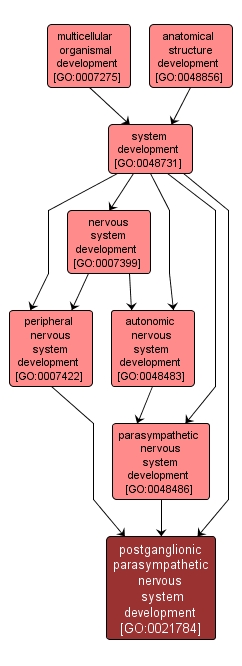| Desc: |
The process whose specific outcome is the progression of the postganglionic portion of the parasympathetic nervous system over time, from its formation to the mature structure. The parasympathetic nervous system is one of the two divisions of the vertebrate autonomic nervous system. Parasympathetic nerves emerge cranially as pre ganglionic fibers from oculomotor, facial, glossopharyngeal and vagus and from the sacral region of the spinal cord. Most neurons are cholinergic and responses are mediated by muscarinic receptors. The parasympathetic system innervates, for example: salivary glands, thoracic and abdominal viscera, bladder and genitalia. |














